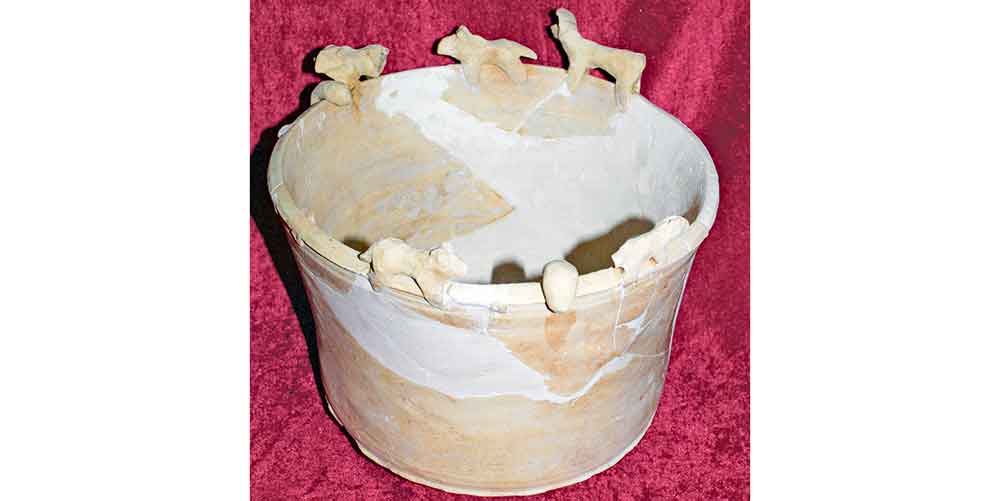In ancient times, the zoomorphic motif was a favourite one in the visual and applied arts of the peoples of Central Asia. At the early stages of human development, the depictions of animals were closely associated with the concept of a totem and an animal ancestor and can be found most often in ceramics. These include a fish, which is known from ancient times. Our ancestors genetically linked it to the water element. In ancient times, fish figurines were worn as an amulet (a pendant fish from the Amudarya hoard of the 5th-4th centuries BC and the depictions of fish in New Nisa of the 2nd century BC). Beads made of fish vertebra most likely played a ritual and magical role in human life. The depictions of certain animals, birds or fish, forming ornamental belts, is common to stamped ceramics of Merv of the 12th-early 13th centuries.
The model of the world was perceived through some kind of zoological code. There was a clear system: birds are the personification of the “heavenly” life; animals are the personification of “earthly” life and the creatures of the underworld – snakes, frogs and fish as a link between life above and below the earth.

